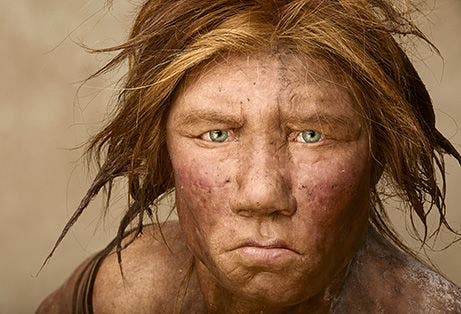
Advancements in genetic sequencing has allowed genomic research to flourish. DNA sequencing is now much faster, cheaper and accurate than ever before, and we’re only now beginning to reap the rewards. It’s the first step to a complete understanding of our bodies. The Human Genome Project, once finally completed, mapped and identified all the genes of the human genome. This helps us get an idea of where are, but to understand how we got here, we also need to peek into ancient DNA. For instance, a recent study found that Tibetans share at least one gene with the ancient Denisovans, an ancient human species that interbred with the Tibetan homo sapiens ancestors. Ironically, the Denisovans’ extinctions was pushed by the homo sapiens presence.
A unique gene that makes the Tibetans genuine supermen (atop the Himalayas of course)
The gene in question is called EPAS1 and helps the Tibetans adapt to extreme altitudes of 15,000 feet or more. In a way, Tibetans are superhuman mountain people, since they are able to survive in conditions that could normally kill a non-Tibetan.
“We have very clear evidence that this version of the gene came from Denisovans,” said principal author Rasmus Nielsen, a Berkeley professor of integrative biology, in a press release.
The Denisovans are a group of ancient humans that have only recently come to our knowledge. In March 2010, scientists announced the discovery of a finger bone fragment of a juvenile female who lived about 41,000 years ago, found in the remote Denisova Cave in the Altai Mountains in Siberia – a cave which was also inhabited by humans and Neanderthals. Nobody knows what Denisovans looked like because there are so few fossils. But geneticists have managed to sequence their entire genome to a high degree of accuracy.

The present study is of great significance, because it not only proves without reason of a doubt that homo sapiens interbred with the Denisovan hominids, but is also the first study of its kind that shows a gene from another species of human was used to help modern humans adapt to their environment.
A breakthrough discovery
Particularly, the gene only activates a high-altitudes or atmospheres with low-oxygen content. It’s during this time that a normal homo sapiens gets in trouble, because the low-oxygen atmosphere triggers a rush of hemoglobin, which is the red-colored protein responsible for transporting oxygen in blood. But it’s too much of a good thing causing blood thickening, which can result in heart attacks and death. When the EPAS1 gene activates, however, only a slight increase of hemoglobin is triggered – just enough to compensate for the oxygen reduction.
“We found part of the EPAS1 gene in Tibetans is almost identical to the gene in Denisovans and very different from all other humans,” Nielsen said. “We can do a statistical analysis to show that this must have come from Denisovans. There is no other way of explaining the data.”
The gene can also be found in certain members of the Han Chinese population, which had the gene passed down by the Tibetans. Interestingly enough, natives to the island of Melanesia – an indigenous group which shares up to 5% of its DNA with Denisovans – don’t have this gene. Clearly, because they interbred, the Melanesians also had the gene at one time, but because they never had to use it, the gene came off.
So, how much of us is homo sapiens? The short answer is we don’t know yet. Not too long ago, the community thought modern homo sapiens never interbred with other hominids. Later it was shown that homo sapiens indeed interbred with both Neanderthals and Denisovans, with which we share DNA, and possibly other groups of yet unknown hominids as well. A more refined understanding of the human genome and future remarkable findings will definitely shed further light onto this.
“There might be many other species from which we also got DNA, but we don’t know because we don’t have the genomes,” Nielsen said. “The only reason we can say that this bit of DNA is Denisovan is because of this lucky accident of sequencing DNA from a little bone found in a cave in Siberia. We found the Denisovan species at the DNA level, but how many other species are out there that we haven’t sequenced?”
The results appeared in the journal Nature.






